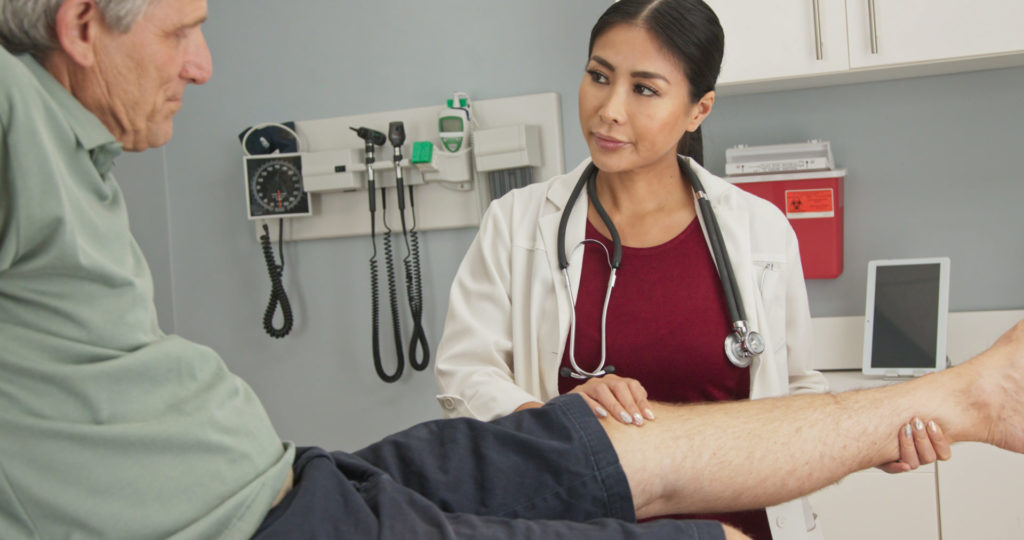Introduction
Physiotherapy provides benefits to people of all ages, with a range of different health considerations. It focuses on restoring optimal movement and function to the body, taking a holistic approach that helps to empower the patient.
It’s most commonly used for issues relating to bones, joints and soft tissue but is also helpful for conditions relating to the brain, nervous system, heart, circulation, lungs and breathing.
Physiotherapy can help to improve or resolve physical issues, and help prevent further injury.

Your physiotherapist will undertake an initial assessment in order to understand more about your injury and how it impacts on your everyday life. This information is used to complete a clinical examination of the injury, and provide a diagnosis and treatment plan as a result.
We understand that everyone has different needs when it comes to physiotherapy, and our experienced physiotherapists will work with you to offer modern and evidence-based management in order to facilitate healing and rehabilitation.
Ready to book now? Get in touch to discuss your needs and decide on the best course of treatment for you.
Ready to book now? Get in touch to discuss your needs and decide on the best course of treatment for you.
Commonly treated conditions
Neck
Approximately 40% of the population will experience neck pain in any one year and around 70% of us will have neck pain at some point in our lifetime.
Neck pain can present in many ways, and can often cause pain to be felt in other areas of the body such as the arm, hand, head or the shoulder blade. Reassuringly, the majority of neck pain can be treated successfully with education, exercise and maintaining a healthy lifestyle.
Common neck conditions that can be treated with physiotherapy
- Disc injury
- Posture issues
- Cervicogenic and tension headaches
- Muscular dysfunction and trigger points
Shoulder
Shoulder pain is the second most common musculoskeletal problem following back pain.
The majority of shoulder problems will improve with exercises, education and staying active, without the need of a scan or surgery. Our physiotherapists have the knowledge and tools you require to help you recover from your shoulder problem.
If you are suffering from a shoulder problem, and wish to attend one of our clinics we suggest you use the ‘refer yourself’ section below.
Common shoulder conditions that can be treated with physiotherapy
- Pain and weakness
- Impingement
- Rotator cuff issues
- ACJ injuries or instability
- Dislocations and instability
- Frozen shoulder (capsulitis)
Wrist
Wrist pain is common and can occur throughout everyday life. This might include simple everyday use, work injuries or sporting injuries.
Common wrist conditions that can be treated with physiotherapy
- De Quervain’s syndrome
- TFCC injuries
Knee
Knee pain is common in all age groups and include:
- Simple strain/sprain: This happens as a result of increased activity or the overstretching of tissues.
- Anterior knee pain syndrome: Pain generally associated with kneeling, going up or down stairs, sitting on a low seat or running long distances.
- Damage to the meniscus or cartilage: This can happen over time or from during a sudden event.
- Osteoarthritis: is a common cause of knee pain as we age, causing swelling and a reduction in activity levels. Those who are overweight or have had injuries to the knee in the past are most prone to developing osteoarthritis.
Less common knee problems include tendon issues, ligament problems or irritation to soft tissue.
Common knee conditions that can be treated with physiotherapy
- Post arthroscopy rehab
- Patella tendinopathy
- Ligament injuries (ACL, MCL, PCL etc)
- Meniscal and cartilage injures
- Patella femoral syndrome
- Fat pad impingement
- ITB syndrome
- Osteoarthritis
Back
Back pain affects one in three of the adult population each year and 20% of those affected visit a GP for help. Furthermore, 84% of the population experience back pain at some point in their adult life. Back pain can present in many ways and can often cause pain to be felt in other areas of the body such as the buttock, thigh, calf or foot.
Reassuringly, the majority of neck pain can be treated successfully with education, exercise and maintaining a healthy lifestyle.
Common back conditions that can be treated with physiotherapy
- Disc injury
- Sciatica
- Posture issues
- Muscular dysfunction and trigger points
Elbow
Elbow and forearm pain is commonly associated with playing sports, heavy manual work such as gardening, lifting or moving and also trauma related to a fall.
Elbow pain is commonly associated with tendon problems, simple sprains of the joint, bursitis around the elbow and repetitive strain injury.
Common elbow conditions that can be treated with physiotherapy
- Tennis elbow
- Golfers elbow
Hip
Hip pain is commonly felt at the front, side or around the hip. There are many reasons for hip pain, including:
- Osteoarthritis: affects most people as we age. It is felt during activities such as putting shoes or socks on, getting out of a car or deep chair.
- Lateral hip pain: is caused by irritation of the soft structures on the side of the hip. It is most noticeable when walking or lying on your side.
- Impingement: feels like a ‘pinch’ in the front of the hip joint. It is typically felt during twisting, squatting or sitting.
Common hip conditions that can be treated with physiotherapy
- Femoroacetabular impingement
- Gluteal tendinopathy
- Pain and weakness
Foot
Foot pain is a common problem with a wide range of possible causes. These can include things like sprains which affect ligaments, and strains which affect muscles. They are associated with trauma, or sudden increased activity (e.g. overtraining).
Common foot conditions that can be treated with physiotherapy
- Achilles tendinopathy
- Ligament injuries and instability
- Plantar fascia or heel pain
- Shin splints
- Lisfrancs injuries
- Turf toe
Typical treatments
Physiotherapists take a holistic approach to treatment, and depending on your individual requirements, sessions may cover education and advice, exercise and physical activity guidance and manual therapy.
Physiotherapy often includes exercises for mobility and muscle strengthening. These can help to increase your flexibility and regain lost movement. Often these will be done initially with the physical support of your physiotherapist or aids such as bands and weights, and are often encouraged to be done at home as well. Strength exercises help to prevent injuries from happening again and protect your bones, ligaments, joints and tendons.
Physiotherapy massage may also be used alongside your exercise plan. This may be done before a session, to help loosen your muscles or remove excess fluid (for example, if you have lymphoedema). It can also be used to reduce tightness, as well as pain and swelling.
In some instances, manipulation may also be performed by physiotherapists trained to deliver this type of therapy. This uses short and sharp movement to push your joint beyond its range of movement to help loosen it. This is often beneficial for reducing back pain and improving mobility.
Joint mobilisation also takes a joint beyond its normal range of movement, with the aim of reducing pain and muscle spasms. This is done by your physiotherapist taking the weight and slowly moving the joint, rather than the quick movement of manipulation.
Shockwave therapy is a non-invasive and safe technology that delivers mechanical sound waves via a handheld device to provoke a healing response. Clinically proven and recognised by NICE, it can be especially beneficial for degenerative and/or persistent soft tissue conditions.

Post-surgery rehabilitation
Following surgery, many patients find rehabilitation valuable to aid a quicker and more effective recovery. Other benefits can include pain management, muscle strengthening and stretching, and improved mobilisation. Your physiotherapist will discuss a recommended management plan for you prior to any surgery required, based on your initial physical assessment.






